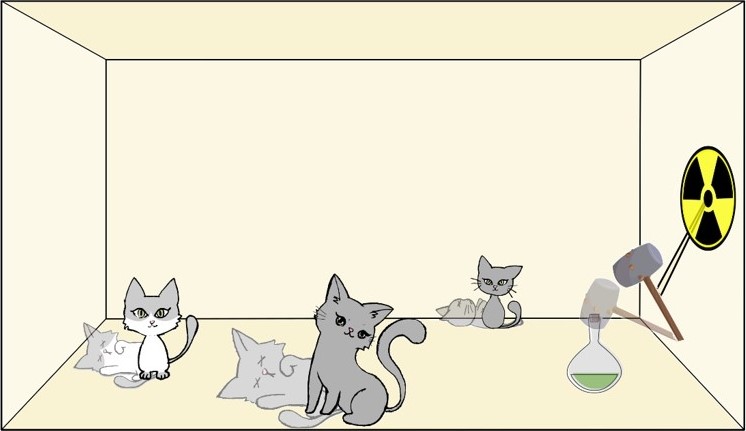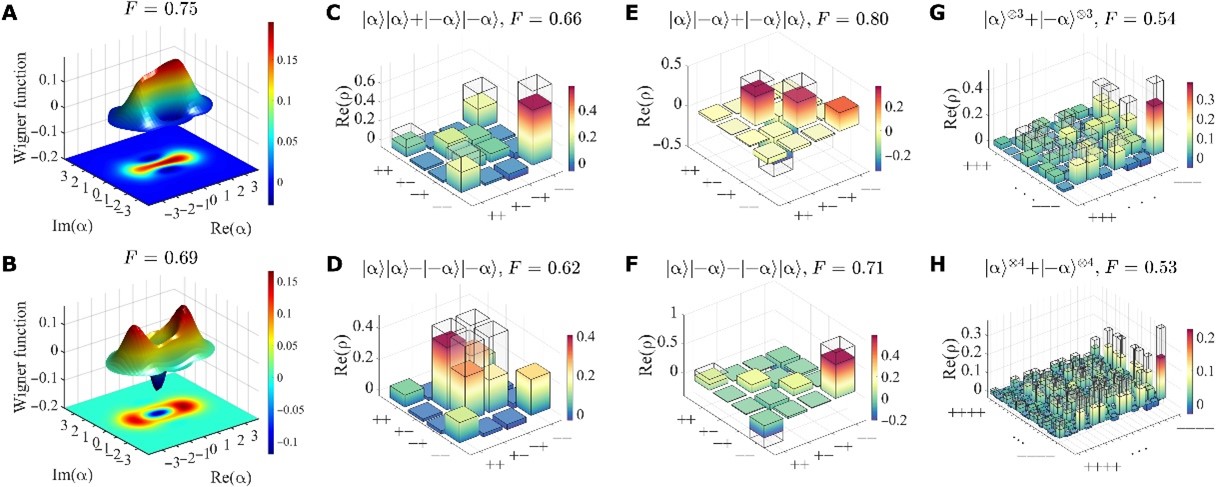Schrödinger’s cat originates from the famous thought experiment querying the counterintuitive quantum superposition of macroscopic objects. As a natural extension, several “cats” (quasi-classical objects) can be prepared into coherent quantum superposition states, which is known as multipartite cat states demonstrating quantum entanglement among macroscopically distinct objects. Preparing Schrödinger cat states has attracted wide research interest and Schrödinger cat states have been successfully prepared in various physical systems over the decades. However, those protocols are difficult to be extended for generation of multipartite cat states, limited either by the required experimental control techniques or the nondeterministic nature of the scheme.

Recently, a team of Tsinghua researchers led by Prof. Luming Duan has successfully demonstrated a highly scalable approach to deterministically create flying multipartite Schrödinger cat states by reflecting coherent-state photons from a microwave cavity containing a superconducting qubit. The work marks a significant advance in implementing a series of quantum information processing protocols based on cat states. In a paper describing the work in the journal Science Advances, Tsinghua researchers perform full quantum state tomography on the cat states with up to four photonic modes and confirm the existence of quantum entanglement among them. They also witness the hybrid entanglement between discrete-variable states (the qubit) and continuous-variable states (the flying multipartite cat) through a joint quantum state tomography, and thus present a highly scalable scheme for the deterministic generation of multipartite cat states and provides an important enabling step to realize various quantum metrology or quantum information processing protocols based on continuous-variable cat states.

Co-first authors of the paper are IIIS PhD students Zhiling Wang and Zenghui Bao, and the corresponding authors are Professor Luming Duan, Associate Researcher Hongyi Zhang. Other co-authors include IIIS Phd students Yan Li, Weizhou Cai, Weiting Wang, Yuwei Ma, Tianqi Cai, Xiyue Han & Jiahui Wang, Assistant Professor Yukai Wu, Research Fellow Yipu Song and Associate Professor Luyan Sun. The research was funded by the National Natural Science Foundation of China under grant no. 11874235, the National Natural Science Foundation of China under grant no. 11925404, the National Key Research and Development Program of China (No. 2017YFA0304303), the National Key Research and Development Program of China (No. 2020YFA0309500), the Key-Area Research and Development Program of Guangdong Province (No. 2020B0303030001), and a grant (No. 2019GQG1024) from the Institute for Guo Qiang, Tsinghua University.
(By Yuying Chang)
paper link: https://www.science.org/doi/10.1126/sciadv.abn1778